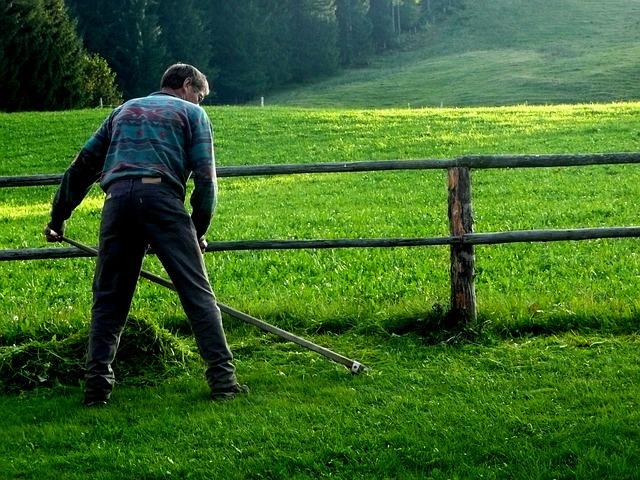
A brief history of lawns
Hundreds of years ago, lawns were used as green communal spaces to graze livestock, so it was very rare for a household to have a lawn of its own. Lawns grew in popularity amongst European aristocrats during the Middle Ages because the conditions were good for growing grass. They scarcely appeared in other countries or cultures around the world until they became influenced by Western culture.
The English lawn as we know it
It wasn't until much later during the 17th and 18th centuries when lawns really took off in the aristocratic gardens of England. Unlike the lawns we have today, these early lawns were similar to meadows and were made up of wild plants like camomile. Having a lawn in your garden was a status symbol, it showed that your property had land that didn't need to be used for food production and that you could afford to keep the lawn maintained.
Prior to the invention of lawnmowers, it would cost a fair amount of money to keep a large lawn trimmed and healthy. It was common for a scythe or a pair of shears to be used to cut the lawn. Can you imagine cutting your lawn by hand? Rather than whizzing around on your sit-on mower, you'd be looking at hours of hard manual labour. It's no surprise that domestic lawns didn't really take off during this time.
Over time, grassy areas started to appear in more domesticated spaces and emphasis was put on their value for young children who could play and explore on them. Lawns and grassy spaces became much more common after the lawnmower was invented.
When was the lawnmower invented?
Edwin Beard Budding invented the first lawnmower in 1830! The idea came to him when he saw a machine in a cloth mill that was being used to take the excess wool off the top layer of the material to leave a smooth, bobble-free finish. He thought about creating a similar device with rotating blades that could be run across the surface of the lawn to trim the grass to a more suitable length.
Since few people had lawns on their own property, this technology was initially used to trim the grass on sports grounds and in regal gardens. It was much more efficient than using a scythe to trim the lawn & quickly became the preferred lawn maintenance method. In August 1830, budding patented his design.
The flaws with the invention
It's not unusual for the first models of any invention to have flaws and problems. Budding's lawnmower incredibly heavy, difficult to manoeuvre and sometimes the blades would rotate near the surface of the grass but not quite close enough to actually cut it. It wasn't long before other inventors tried their hand at creating a more sophisticated lawnmower.
Between the first lawnmower and the revolutionary robot lawn mowers of today, there have been lots of iterations of the lawnmower! Modern gardeners have the luxury of choosing between, electric, petrol-powered and even ride-on lawnmowers, all of which make lawn maintenance far easier.
If you're looking for professional lawn care services, you're in the right place. Take a look at our specialist lawn care treatments by clicking the button below:
Specialist Lawn Care Treatments >